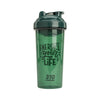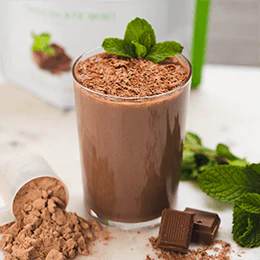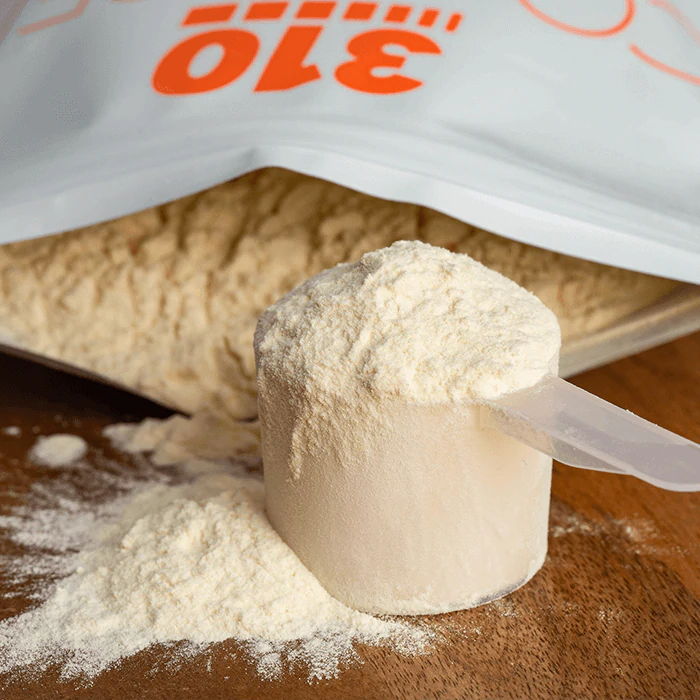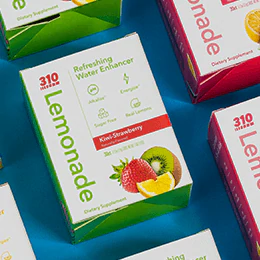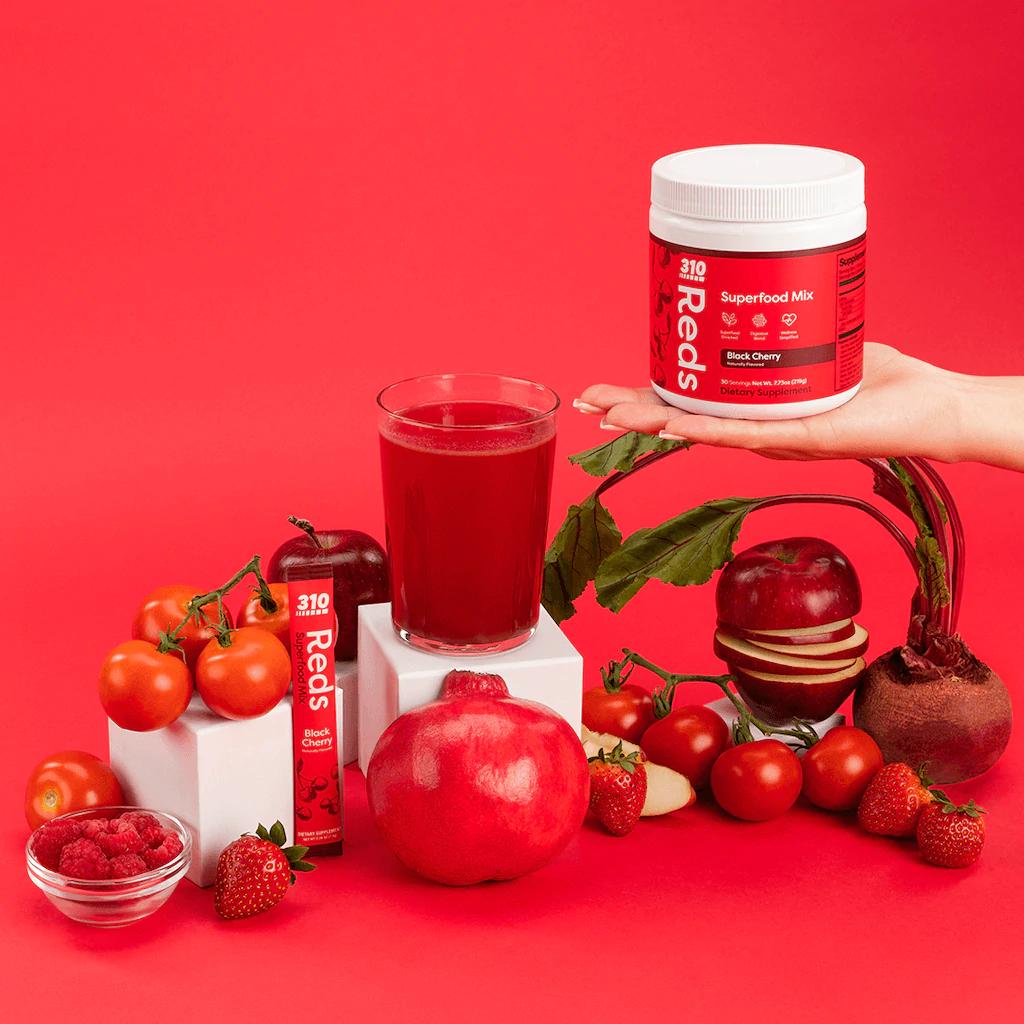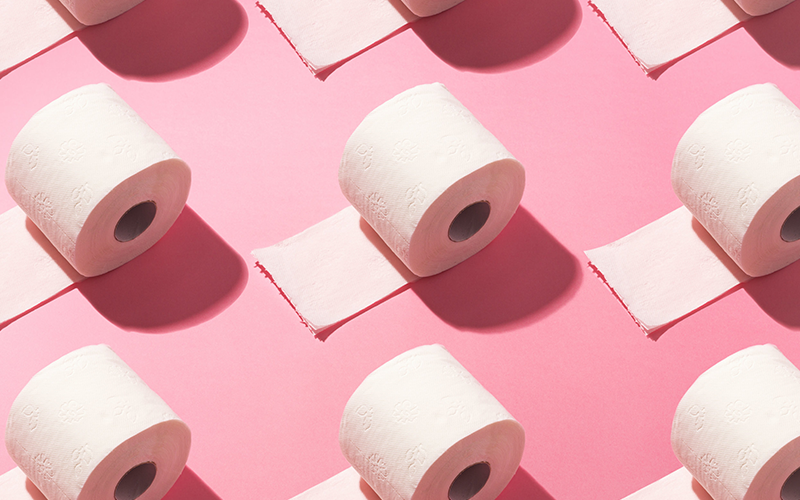As you embark on a journey of learning to eat healthier and trading in bad dietary habits for nourishing ones, there may be some unexpected changes in your bathroom habits along the way. Based on a survey we released in the 310 Community, many of you have experienced or are experiencing some of these changes – either for the good or the bad! And Real Talk… we know you need to talk about these things!
Even if “poop” is not something you regularly talk about, it should be factored in when you’re considering full body health. It’s important to pay attention to how your stool changes, and also what you can do to maintain regularity. And finally, how this all relates to weight loss.
Because the truth is, any changes you make in your diet will also affect… the way you poop. And if you want to be comfortable in your new healthy lifestyle (in more ways than one!), you absolutely have to address your bathroom habits as part of your overall long-term health plan.
So in a series of articles on “real” topics that will affect you in your health journey, we’re going to go ahead and talk about healthy pooping – and how you can be more satisfied in your bathroom habits for a healthier body and healthier life. Let’s begin!
What is Considered a Healthy Poop?
First of all let’s address the elephant in the room question… WHAT actually IS poop anyway?!
It’s important from a health perspective to know what in fact makes up your poop, so you can understand when it looks different one day from another and why.
Interestingly, your poop is 75% water! The rest is a combination of different bacteria, cells and mucus. While foods with soluble fiber end up in your poop, foods with insoluble fiber (like corn and carrots) are too hard to digest and often end up coming out looking the same as when you ate them! (1)
Bristol Stool Scale
Let’s go ahead and look at the Bristol Stool Scale to help you understand the difference between “healthy poop” and “not so healthy poop”. Yes, this may mean you have to take a look in the toilet, so make sure you’ve had your breakfast first!
The Bristol Stool Scale (also known as the Meyers Scale), was developed by a doctor in 1997 using a team of volunteers, and is now the recognized guide for helping you figure out if you’re having healthy #2, or not. (2)
If you were to call a doctor with questions about your bowel movements, you would simply refer to your stool as one of the numbers below. This helps them determine how to help you without having to actually see your bowel movement…

To sum up what you see above, “healthy” poop is typically type 3 or 4, whereas type 1 or 2 generally leans towards constipation and types 5, 6, and 7 lean towards diarrhea.
What about Poop Color, and Errr… Smell?
Generally, as you already know, your stool should be various shades of brown. What you may not know is that some coloring is actually okay, especially depending on what you eat.
But whereas your stool turning green from certain veggies or red after a helping of beets is okay, certain colors (like light gray for instance) may indicate signs of an underlying illness that need to be addressed. In addition, a yellow tone typically indicates sickness or imbalance in the body. (3, 4)
With that being said, your poop is never going to smell good. But if your situation is unusually bad smelling it’s probably good to get another opinion. (5)
When in doubt, it’s always best to check with a doctor on your specific situation.
What Does It Mean to Be “Regular” When it Comes to #2?

A big question many of you had in the survey we gave in the Community is, what actually is a regular bathroom schedule? How often should you poop?
While you don’t need to poop every day, the most important thing is that you follow a schedule – the personal schedule that works for YOUR body.
A great thing to do is to keep a food diary that also includes your bathroom habits for a week or two, to get an idea of what YOUR schedule is, so then you can pinpoint if something is off.
Of course, your schedule will change based on your food and hydration habits, along with your exercise habits – and we will definitely address all that.
But to answer the question, a healthy pooping schedule could be going anywhere between three times a week to three times a day – depending on you and your diet and lifestyle. (6)
The most important thing is that your poop is “healthy” based on the chart above, but don’t sweat how much you poop unless it’s more or less than the amounts given above.
How Do You Get “Regular?”

Now that you know more about your poop than you ever thought you would, let’s go into specifics about how you can maintain regularity and smooth and comfortable bathroom habits.
In the survey, many of you mentioned that you were constipated often before changing to a healthier diet that included 310 Shake. And many of you also mentioned that a healthy diet fixed your constipation.
For others, diarrhea was more of an issue before. And for most of you, occasional bouts of “not so pleasant #2” were still an issue sometimes.
So, we’re going to go over some of the best foods and habits to keep things running smoothly, including helpful supplements like 310 Shake and 310 Juices (both packed with fiber and superfoods to keep things moving along and reduce digestive complaints)!
Let’s start with the magic ingredient that’s going to make a huge difference in your pooping life… Fiber!!!
Fiber: The Key Ingredient to Healthy Pooping Habits

When it comes to healthy bowel movements, fiber is going to play a key part… especially insoluble fiber. Although both soluble and insoluble fiber are necessary as part of an overall healthy diet and well-balanced nutrition, insoluble in particular is important to good bowel health.
Going back to the Bristol Stool Chart, insoluble fiber is what makes your stool easier to pass, helping your body get rid of waste.
Whereas soluble fiber dissolves in water, insoluble fiber does not. Instead, it absorbs the fluids along with other materials in your body, and becomes the bulk of your stool. (7)
In this way, it helps prevent and treat constipation, making stools into the type 3 and 4 in the stool chart that you’re looking for.
Just don’t have TOO much fiber because that can actually have the opposite effect, and lead to negative side effects. You don’t want to overdo it, since symptoms of eating too much fiber include bloating, gas, stomach pains, constipation or diarrhea.
But, it’s pretty hard to overdo it in fiber for most people, who often aren’t able to get enough. So, what’s the perfect amount?
How much fiber should you get per day?
Aim for 25 – 30g from a variety of whole foods like fruits and veggies, nuts, and grains. We’ll give you more specific food recommendations below.
You can also get fiber from the best meal replacement shakes like 310 Shakes. Learn more about the all-encompassing benefits of fiber in your meal replacement shakes for gut, bowel, and total body health.
When it comes to weight loss, fiber also helps keep you full and satisfied and helps keep your appetite under control. Learn more about how a balanced diet including fiber-rich foods can help you curb hunger cravings and get on track with weight loss.
Our Recommendations for Great Bowel Health
Now that we know why fiber is important, let’s go ahead and look at top recommendations for great digestive and bowel health, to keep you as comfortable as possible.
1) Keep Up With Great Hydration
Remember how we said your bowel movements were 75% water?! This will make it easier for you to remember just how important staying hydrated is to your #2. (8)
You have to make sure your stools have enough water so that they are easy to pass. Otherwise, you’ll be dealing with constipation – which is basically dehydration in the colon. (9)
To help prevent this, get the recommended 11.5 cups (for women) and 15.5 cups (for men) of water per day. (10). In addition, making sure your body isn’t low in electrolytes (like magnesium, potassium, sodium and calcium), can also help prevent and treat current constipation.
We recommend you keep your daily liquids varied. Instead of just plain H20, try electrolyte-packed 310 Lemonades and Hydrates which can also help with weight loss. You can also drink green or red juice, or herbal teas.
2) Fiber-Rich Foods & Drinks
The next tip goes back to how important fiber is in your diet, and focusing on foods and drinks that help you get enough.
Both soluble and insoluble fiber are important to good bowel health, a varied diet, total wellness, and helping with your weight loss goals.
Let’s look at some of the best ways to get enough fiber… (11)
Good sources of soluble fiber:
Apples
Bananas
Barley
Beans
Carrots
Citrus fruits
Oats
Peas
Pumpkin
Good sources of insoluble fiber:
Beans
Nuts
Wheat bran
Whole wheat flour
Veggies (cauliflower, green beans, potatoes)
Berries
Meal replacement shakes:
The best meal replacement shakes such as 310 Shake can also help you get your daily recommended amount of fiber.
310 Shakes contain fiber-rich superfoods in a convenient, easy to drink way. Each shake has 5g of fiber, and if you add it into a blender with additional ingredients you can get even more fiber.
Good fiber-rich smoothie additions include: banana, berries, spinach, avocado, kale, chia seeds, pumpkin, coconut, and raw nuts.
3) Make Important “Food Swaps”
When looking at your dietary habits, it’s also important to make swaps when you see that particular foods for meals or snacks aren’t working for you.
If you’re struggling with uncomfortable symptoms like digestive upset, constipation, diarrhea, gas or bloating, your dietary choices (even in small amounts) could be to blame.
As a general rule of thumb, aim for fiber and nutrient-rich whole foods in place of sugary, greasy or overly processed foods high in refined carbs and saturated fats.
It’s important to pay attention to YOUR body and the foods that work for you. There are many popular dietary plans these days (like vegan, keto, paleo, Whole30, Atkins and many, many more). But while one plan might work perfectly for one person, it may spell major digestive problems for you.
For instance, keto is a popular dietary plan, but some people have difficulty absorbing fat, especially in high amounts. If you struggle with watery stools and you’re on keto, you may need to choose more fiber-rich sources of fat – like avocado and olives – instead of fatty meats and heavy sauces.
In addition, excessive alcohol, caffeine, spicy foods, dairy products, and even artificial sweeteners (which we don’t recommend) can cause type 5, 6, and 7 stools that tend towards diarrhea. (12)
Pay attention to your body, and make wise choices!
Here are some common unhealthy dietary choices that can easily be made healthier with whole foods and fiber!
Trade the first for the second!
Soda or sugary drink -> 310 Lemonade, fruit-infused or sparkling water
Chocolate bar -> 310 Chocolate Shake or Chocolate Protein Brownie Bites
Candy -> Sweet and tangy fruits like orange, green grapes, blueberries and cherries
Cake -> 310 Vanilla Cake Shake or an indulgent smoothie recipe
Bag of potato chips or other salty food -> Celery and peanut butter, or celery and cream cheese sprinkled with everything seasoning
Buttery popcorn -> Air-popped popcorn with coconut oil
Processed peanut mixes –> Homemade trail mix (combine your favorite nuts, dried fruits, coconut flakes, seeds, dark chocolate chunks, or whatever you have on hand
4) Exercise
We also cannot state enough the importance of exercise when it comes to keeping up with a regular bathroom schedule and keeping things moving smoothly.
Not only is exercise essential for a healthy lifestyle and accomplishing your weight loss goals, it’s the “secret sauce” to helping to prevent constipation and keep a well moving digestive system.
In particular, cardio exercises that get you sweating and your heart pumping are best, by also speeding up digestive processes. Exercises like brisk walking, biking, hiking, swimming, and running help move food through the large intestine quicker, making stool easier to pass. It also helps stimulate the natural contractions in your intestines that make everything much smoother in the bathroom. (13)
5) Stay Active in The Community
Our final advice to keep your bathroom habits front (instead of back of mind) when considering your overall health plan… Is don’t do it alone!
In case you were unsure, these are EXACTLY the types of questions and topics you can talk about in the 310 Community. When it comes to your diet, health, weight loss goals, and all of the daily occurrences and topics that go with it (including healthy pooping habits), we want to help you along the journey!
Our team of health coaches and nutritionists, along with an army of supporters just like you who are climbing towards their own goals are always there for you. We are the #310Family! And you are part of it!
Stay tuned for more articles on Real Topics that help you put your health and wellness in perspective and live your best, most rewarding life. Leave your questions below, and check out the 310 Blog for more recipes, success stories, lifestyle topics and more!
Sources:
- https://www.everydayhealth.com/digestive-health-pictures/icky-but-interesting-facts-about-poop.aspx
- https://www.webmd.com/digestive-disorders/poop-chart-bristol-stool-scale
- https://www.healthpartners.com/blog/healthy-poop-chart/_
- https://www.ummhealth.org/sites/umass-memorial-hospital/files/Documents/Services/Surgery/UMass_Colorectal_Inforgraphic_0316.pdf
- https://www.livescience.com/36689-poop-health-signs-disease-infection.html
- https://www.healthpartners.com/blog/healthy-poop-chart/) (https://www.womenshealthmag.com/weight-loss/a19984518/pooping-and-weight-loss/
- https://health.clevelandclinic.org/whats-the-difference-between-soluble-and-insoluble-fiber/
- https://www.healthline.com/health/food-nutrition/why-is-water-important#bowel-movements
- https://health.usnews.com/health-news/blogs/eat-run/2013/12/02/the-5-step-constipation-solution
- https://www.mayoclinic.org/healthy-lifestyle/nutrition-and-healthy-eating/in-depth/water/art-20044256
- https://health.clevelandclinic.org/whats-the-difference-between-soluble-and-insoluble-fiber/
- https://www.everydayhealth.com/diarrhea-management-photos/diarrhea-and-diet.aspx
- https://www.webmd.com/digestive-disorders/exercise-curing-constipation-via-movement

